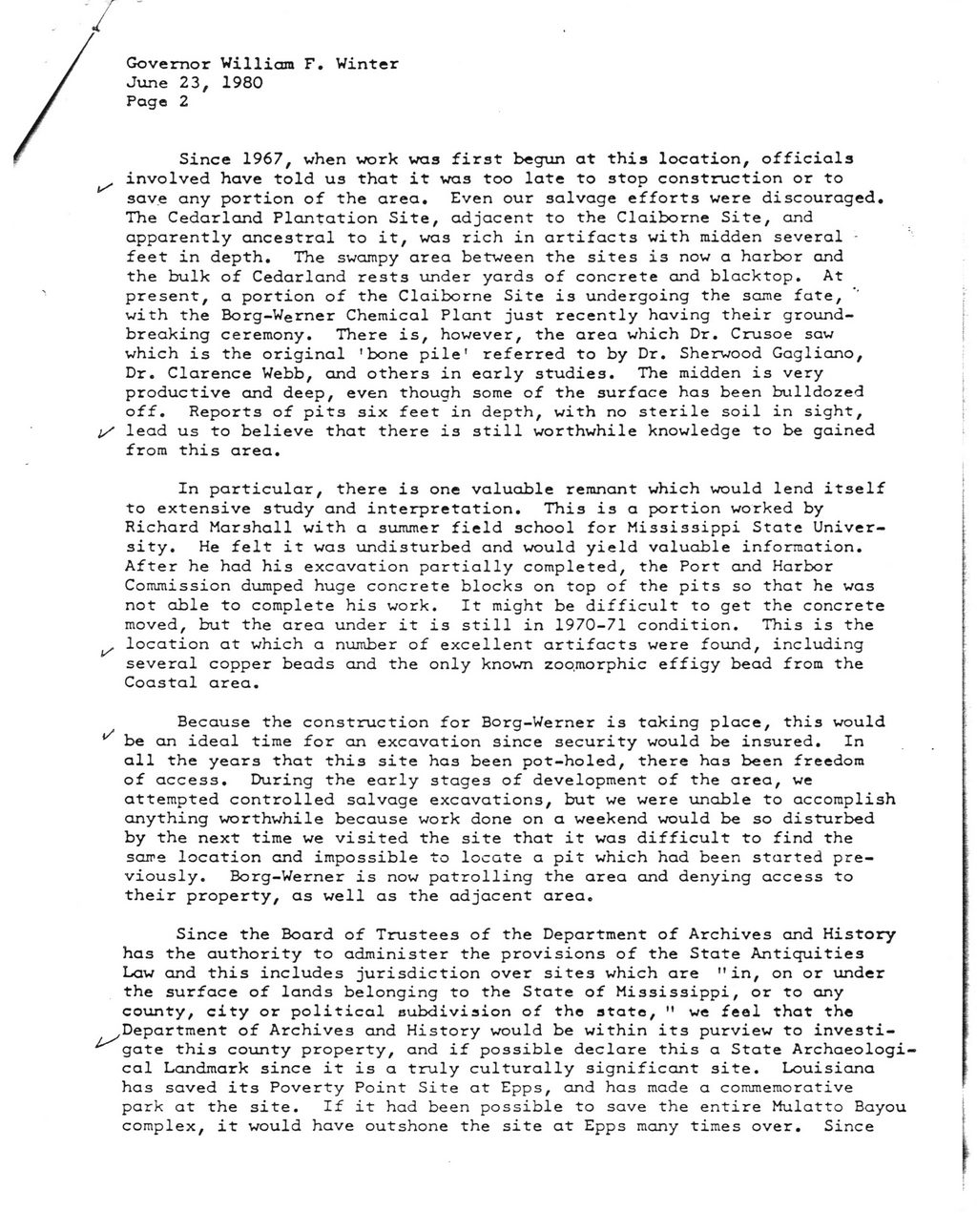This text was obtained via automated optical character recognition.
It has not been edited and may therefore contain several errors.
Governor William F. Winter June 23, 1980 Page 2 Since 1967, when work was first begun at this location, officials involved have told us that it was too late to stop construction or to save any portion of the area. Even our salvage efforts were discouraged. The Cedarland Plantation Site, adjacent to the Claiborne Site, and apparently ancestral to it, was rich in artifacts with midden several -feet in depth. The swampy area between the sites is now a harbor and the bulk of Cedarland rests under yards of concrete and blacktop. At present, a portion of the Claiborne Site is undergoing the same fate, with the Borg-Werner Chemical Plant just recently having their groundbreaking ceremony. There is, however, the area which Dr. Crusoe saw which is the original 'bone pile1 referred to by Dr. Sherwood Gagliano, Dr. Clarence Webb, and others in early studies. The midden is very productive and deep, even though some of the surface has been bulldozed off. Reports of pits six feet in depth, with no sterile soil in sight, lead us to believe that there is still worthwhile knowledge to be gained from this area. In particular, there is one valuable remnant which would lend itself to extensive study and interpretation. This is a portion worked by Richard Marshall with a summer field school for Mississippi State University. He felt it was undisturbed and would yield valuable information. After he had his excavation partially completed, the Port and Harbor Commission dumped huge concrete blocks on top of the pits so that he was not able to complete his work. It might be difficult to get the concrete moved, but the area under it is still in 1970-71 condition. This is the location at which a number of excellent artifacts were found, including several copper beads and the only known zoomorphic effigy bead from the Coastal area. Because the construction for Borg-Werner is taking place, this would be an ideal time for an excavation since security would be insured. In all the years that this site has been pot-holed, there has been freedom of access. During the early stages of development of the area, we attempted controlled salvage excavations, but we were unable to accomplish anything worthwhile because work done on a weekend would be so disturbed by the next time we visited the site that it was difficult to find the same location and impossible to locate a pit which had been started previously. Borg-Werner is now patrolling the area and denying access to their property, as well as the adjacent area. Since the Board of Trustees of the Department of Archives and History has the authority to administer the provisions of the State Antiquities Law and this includes jurisdiction over sites which are "in, on or under the surface of lands belonging to the State of Mississippi, or to any county, city or political subdivision of the state, " we feel that the Department of Archives and History would be within its purview to investigate this county property, and if possible declare this a State Archaeological Landmark since it is a truly culturally significant site. Louisiana has saved its Poverty Point Site at Epps, and has made a commemorative park at the site. If it had been possible to save the entire Mulatto Bayou complex, it would have outshone the site at Epps many times over. Since

Claiborne Historical Site Guerin-Giardino-(096)